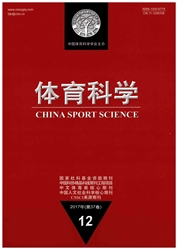

 中文摘要:
中文摘要:
目的:运动是一种简单、有效的高血压非药物辅助疗法,选择适宜的运动强度和运动量是十分重要的。位于VSMC细胞质膜上的L型钙通道(CaV1.2)对血管紧张度的调节具有关键作用,CaV1.2通道表达上调是高血压的标志特征。旨在探讨不同强度运动对自发性高血压大鼠(SHR)肠系膜动脉CaV1.2通道重构的影响。方法:54只SHR大鼠随机分为安静对照组(SHR-SED,n=18)、中等强度运动组(SHR-M,18~20 m/min,n=18)和大强度运动组(SHR-H,26~28m/min,n=18),运动组进行8周跑台运动(1h/d,5d/周)。另选用同龄Wistar-Kyoto大鼠(WKY)18只作为安静正常血压对照组。观察不同强度运动对肠系膜动脉舒缩特性、CaV1.2通道功能和蛋白表达的影响。结果:1)大鼠安静时收缩压和心率:SHR-SED组显著高于WKY组,SHR-M组较SHR-SED组显著降低,而SHR-H组明显升高;2)硝苯吡啶(CaV1.2通道阻断剂)诱发了大鼠肠系膜动脉剂量依赖性的血管舒张,各组大鼠对硝苯吡啶的敏感性依次为:SHR-H〉SHR-SED〉SHR-M〉WKY,中等强度运动使SHR肠系膜动脉对硝苯吡啶的敏感性明显减弱,相反,大强度运动使其明显增强;3)SHR-SED组肠系膜动脉平滑肌CaV1.2通道电流和CaV1.2通道α1c亚基的蛋白表达均高于WKY组,与SHR-SED组相比,SHR-M组CaV1.2通道电流和CaV1.2通道α1c亚基的蛋白表达降低,而SHR-H组显著增加。结论:高血压可引起肠系膜动脉平滑肌细胞CaV1.2通道功能和蛋白表达上调;中等强度的有氧运动能有效逆转高血压动脉CaV1.2通道的重构,对改善血管功能具有积极作用,而大强度运动通过加重CaV1.2通道的不良重构进一步损害血管功能。
 英文摘要:
英文摘要:
Almtract: Objective: Exercise can be considered as a simple and effective non-drug treatment of hypertension. Choosing appropriate intensity and volume is supposed to be of great importance. L-type Ca^2+ (Car 1.2) channels on the plasma membrane of vascular smooth muscle cells play a key role in modulating vascular tone. Cav 1.2 channels upregulation is an ionic feature of hypertension. This study aimed to explore the effects of different intensity of exercise on Cav 1.2 channel remodeling of mesenteric artery (MA) from SHR. Methods.. Twelve-week-old male SHR rats were randomly divided into SHR sedentary group (SHR-SED, n= 18), SHR Moderate-(SHR-M, n= 18,18-20 m/rain) and high-intensity ( SHR-H, n= 18,26 - 28 m/rain) of exercise training exercise group. Eighteen age-matched WKY rats were used as normotensive control. Mesenteric arterial mechanical and functional properties were evaluated. Results:Moderate-intensity of exercise training induced lower systolic blood pressure and heart rate than those of SHR-SED. Moderate-intensity of exercise training significantly suppressed tissue sensitivity to nifedipine, Cavl. 2 channel currents density, and Cavl. 2-α1C subunit protein expression in MAs. However, high-intensity of exercise aggravated all of these hypertension-associated functional and molecular alterations of Car 1. 2 channel. Conclusion: Remodeling of MAs contributes to the development and complications of hypertension. The moderate-intensity exercise can effectively reverse the remodeling of Car 1.2 channels in mesenteric artery, which has a positive effect on improving vascular function. High-intensity exercise would exaggerate the adverse remodeling of Cav 1.2 channel which impairs vascular function further.
 同期刊论文项目
同期刊论文项目
 同项目期刊论文
同项目期刊论文
 期刊信息
期刊信息
